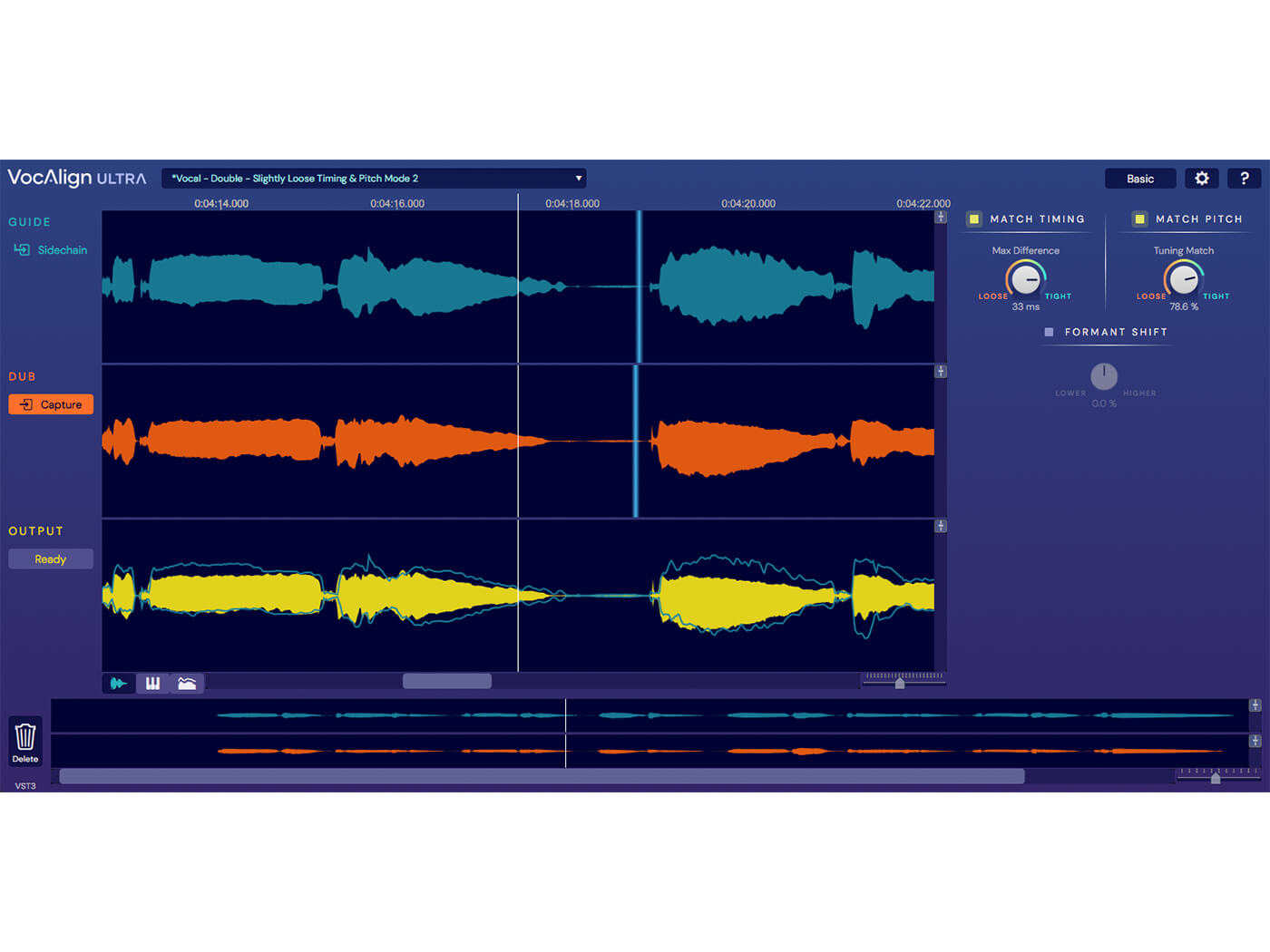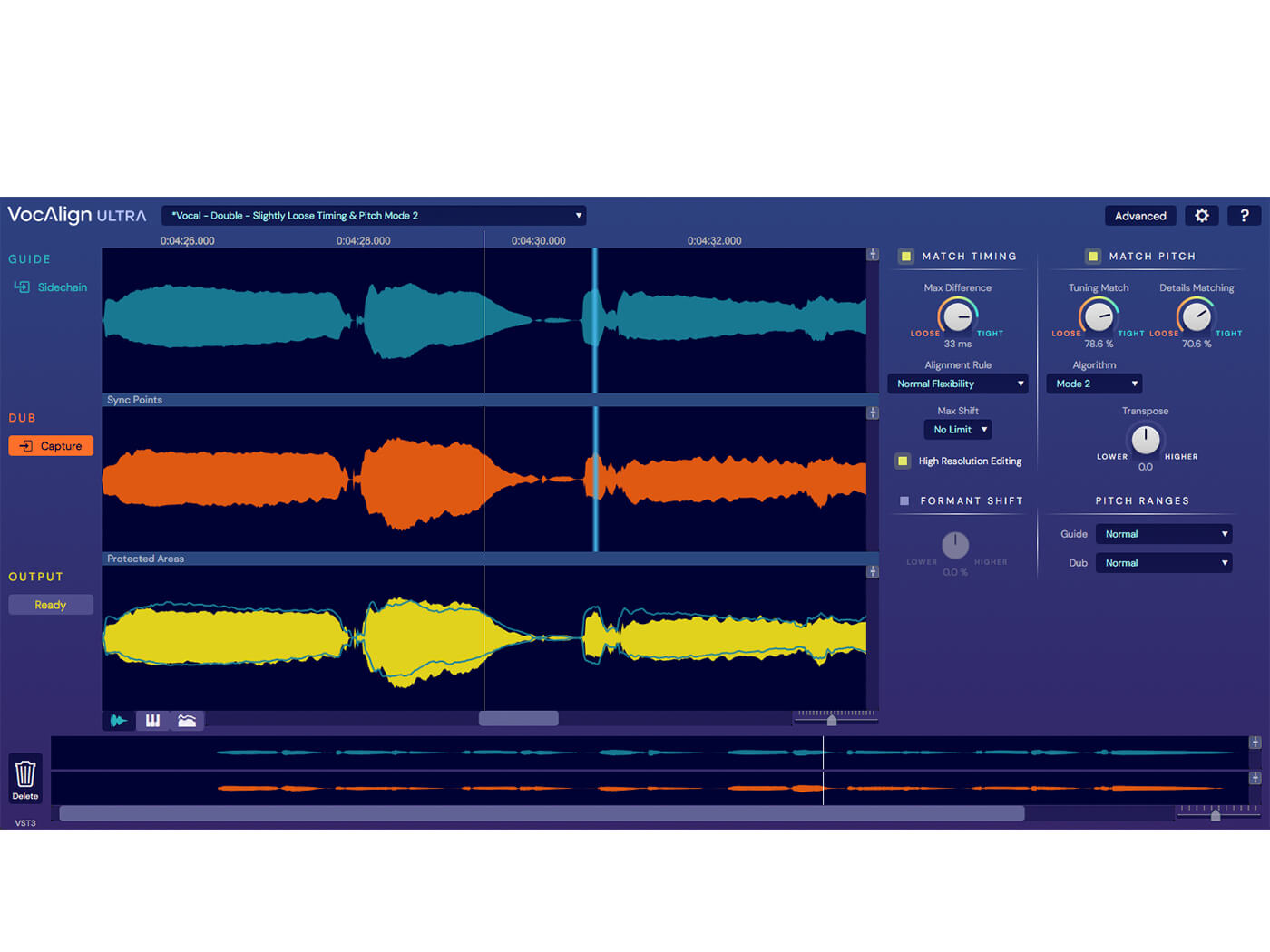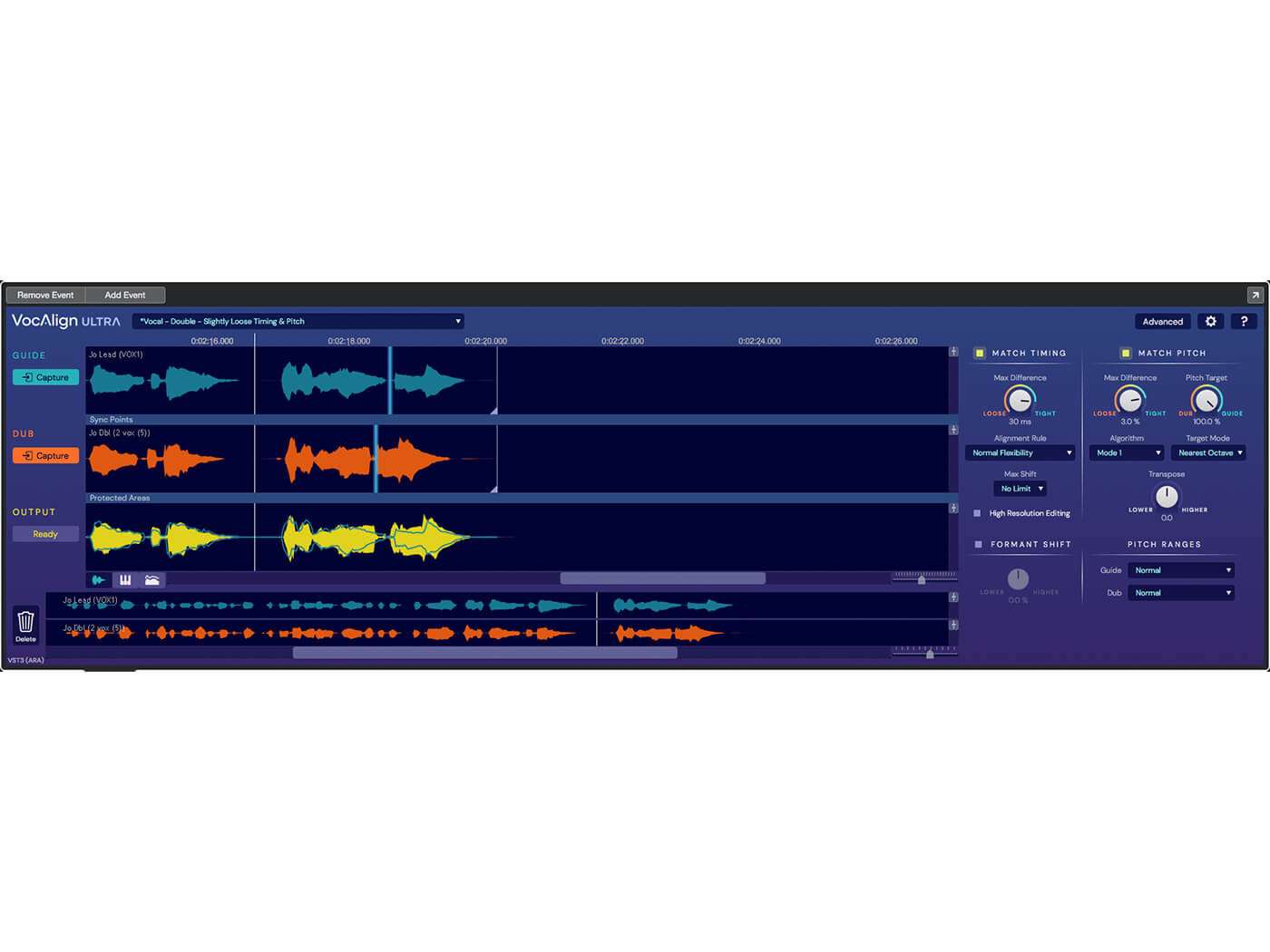Review: Synchro Arts VocAlign Ultra
The human voice rarely produces the same sound twice, so we edit endlessly to achieve ‘almost-the-same’ doubles. VocAlign Ultra proposes we spend less time doing so.

Price £285
Contact synchroarts.com
VocAlign Ultra pours many features of Synchro Arts‘ flagship Revoice Pro into a lighter, cheaper plug-in for time and pitch aligning multiple vocal tracks. Though Revoice Pro is a renowned super-tool for vocal production, it is clear from the start that VocAlign Ultra provides a thoroughly professional editing apparatus.
ARA or Realtime
The core principle of VocAlign is to apply the timing and pitch characteristics of one vocal take, the Guide, to a destination take (or takes), the Dub. There are two ways the VocAlign plug-in (AAX, AU & VST3) achieves this. The first uses the ARA (Audio Random Access) extension, which puts VocAlign into your DAW as an integrated editor. Users can then select the Guide and Dub as events within a DAW project. The Synchro Arts website carries information on which DAWs are currently supporting this method. The advantage of this is efficiency, as the Guide and Dub do not need to be ‘played in’ before editing.
Pro Tools has a similarly slick AudioSuite implementation that doesn’t need you to play audio into the plug-in, either, which can make processing extremely fast.
The second method has the user place the VocAlign plug-in on the Dub track and select the Guide track as the sidechain input. The near-ubiquity of the sidechain function makes this approach possible across almost all DAWs. The plug-in then needs to be played the Guide and Dub parts in real time to gather the necessary data, though you needn’t do this in one long stripe. VocAlign can build up a patchwork across the timeline as you work on sections. It only needs to be redone if audio events are moved or edited in the DAW. Both methods are quick to set up, but the algorithm dictates how much faster and better this semi-automated approach to vocal stack editing is.

Hook-up and Match
The GUI is relatively unfussy, free of endless options and spurious controls. The initial operation is simple. Then, once the preset is selected, and the Guide and Dub are hooked up, it is mostly a case of tweaking the Match Timing and Match Pitch knobs to achieve the required tightness. Naturally, there is also a world of editing possibility lurking just a few clicks away when the interface is switched from Basic to Advanced.
The majority of the scalable interface is given over to three waveform displays: Guide, Dub and Output. Output overlays the adjusted Dub with the outline of the Guide, updating as you change parameters. This display can switch to show the pitch variation of the three signals or their energy levels. In all three modes, there are vertical and horizontal zoom sliders and an easily navigable timeline. In advanced mode, the displays permit you to add and edit sync points to adjust the algorithm’s assessment of the timing relationship between the Guide and Dub. These advanced tools only become necessary when the source material possesses major divergences, such as heavy breaths between words or phrases. Besides sync editing, the user can also set protected areas on the Dub that are spared from timing/pitch processing. This function is especially convenient when working on vocal stacks that have occasional harmonisations or rhythmic syncopations.
Presets are good
VocAlign presents a situation where even the most preset averse are best served by starting with the well-curated menu. Whether it’s being used on lead vocal stacks or ADR production, the main bases are covered, with more extreme needs catered for in sub-folders. The menu also contains a recent folder that saves menu searching for those making heavy use of VocAlign Ultra.
Automated processes in audio production can be a touchy area for many, especially when areas of skilled efficiency become a source of professional pride. Tightening up vocal stacks is definitely in that category, but having developed speedy chops over the years, I’m happy to relinquish much of the work to VocAlign Ultra. The setup, with or without ARA, is fast, and a reviewable result is near-instantaneous. This frees up time for more creative tasks – or longer coffee breaks. With the appropriate preset, it’s hard to fault the initial output of VocAlign Ultra, and often only the Basic mode controls are needed for seasoning to taste.
Get Advanced
Opening the Advanced mode is inevitable as ears become accustomed to the range of VocAlign Ultra, and with it comes a host of extra options for digging into the rules that govern how the Guide defines the Dub. The most useful is the Alignment Rule drop-down menu which offers seven flexibility ranges for time compression/expansion. This significantly affects how the timings and energy levels match and the degree to which an audible artifice can come to bear on the output signal. Overcooking the pitch tracking will cause an unnatural finish, but there’s plenty of control with two operation modes to prevent this.
Mode 1 covers most vocal needs, augmenting the tightness knob with a Pitch Target control (more/less Guide/Dub) and a Target Mode menu. The latter defines the range within which the Dub works, e.g. Nearest Octave keeping it within an octave of its original position while Absolute tracks the Guide directly wherever it goes.
Mode 2 swaps the targetting for Details Matching, which suits occasions when tracking short fluctuations are of paramount importance, i.e. with vibrato.
The Advanced control set also houses a transpose knob (±1200 cents) to create a little space between voices or shift them more wildly. Both modes carry a formant shift control which is fun in large doses, but used carefully within a large backing vocal section can enormously enhance the sense of depth and variation, especially with some hefty stereo imaging.

Though VocAlign Ultra is focussed on voice work, it does have a set of instrument presets. It fares best with percussive and monophonic sources, though resonant body instruments, e.g. acoustic guitars playing single-note lines, are best processed without pitch matching. It’s most handy for tightening up a set of hand percussion takes.
VocAlign Ultra may be cheaper than Revoice Pro, but it is still an investment for those seeking a professional solution to what can be an arduous, repetitious task. It’s a product that can effortlessly become integral within the production process and lead users to one day ponder why they spent so much time hand-editing innumerable vocal tracks. VocAlign Ultra is not necessarily sexy, and it won’t spawn a new genre. However, if you do a lot of vocal recording, you won’t regret purchasing a licence. You might even think of it as buying back time to spend on doing something more creative or relaxing.
Key Features
- Matches timing and tuning of multiple signals
- Simple Tightness control
- Formant shifting
- Over 60 presets for vocal, ADR and instruments
- ARA2 support
- Available in AAX, AU & VST3 and AudioSuite
For more reviews, click here.